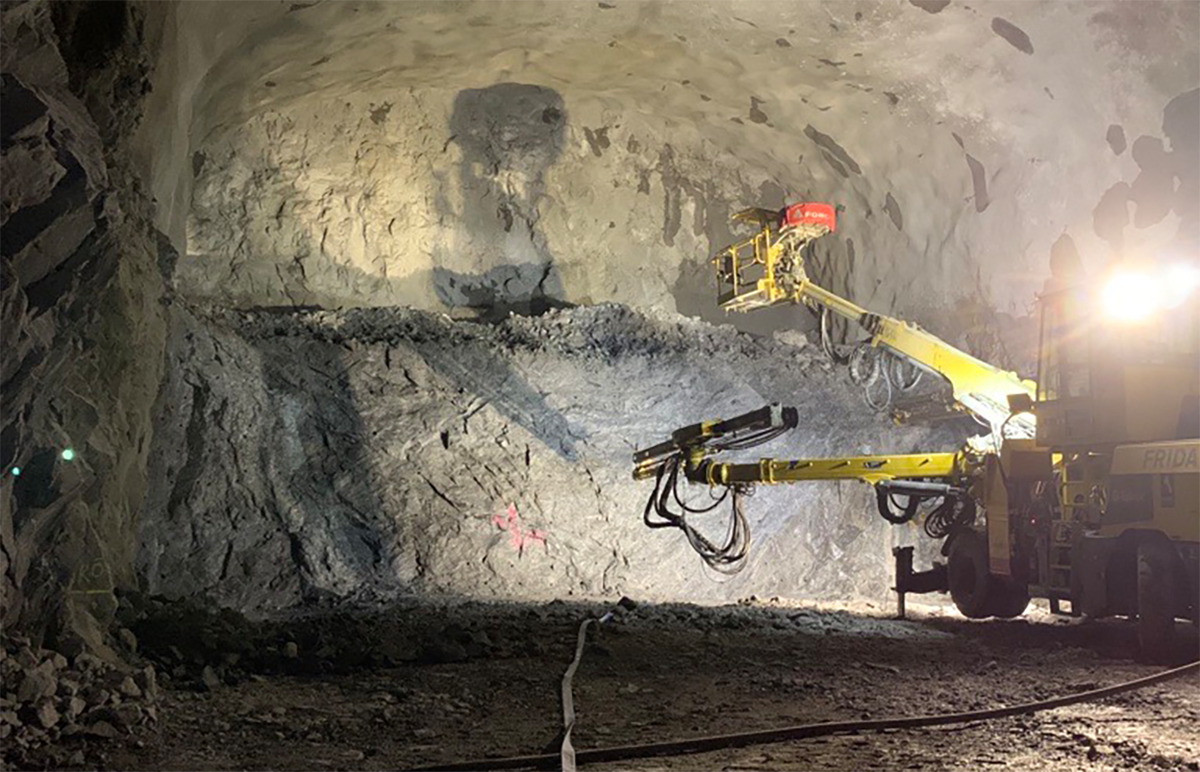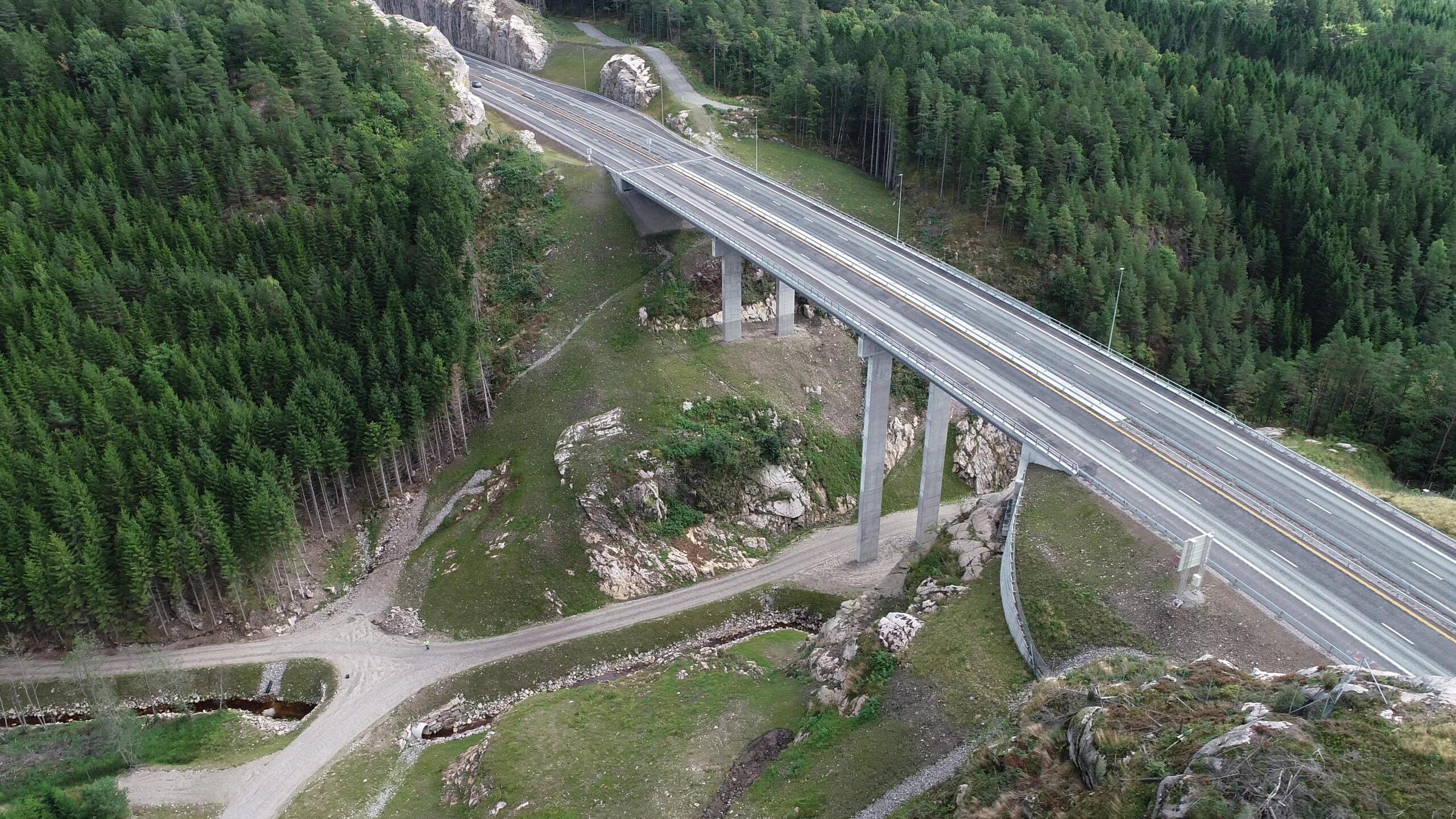BREEAM Infrastructure Version 6 – Construction Assessment Rating: Excellent
Version 6, 2023 | Norway
Assessed by: Heidi Kristine Lie, Charlotte Hjelmseth Larssen,
Ane Lillebuen Berge, Skanska Norge AS
Verified by: Catherine Pinney
Project summary
Water supply is a vital infrastructure. The water supply in Oslo is vulnerable and currently has only one major water source. This water source alone supply 90% of the city’s inhabitants. Assesments show that an event that leads to loss of water is not unlikely. The Norwegian Food Safety Authority order the city of Oslo to establish a reserve water supply by January 2028.

The E8 enterprise is the preparatory enterprise of the works for the new water treatment system in Oslo, to treat water from the new reserve water supply.
Scope of E8 contract:
- Construction sites at Husebyjordet, Huseby skipark and Sollerud
- Tunnels with cast-in-place potals at Husebyjordet og Husebybakken Skipark
In total 8 halls, 9,2 km of tunnel and 4 shafts.
- Tunnel and hall system for the coming water treatment system.
- Hall for assembley and tunnel for installation of tunnel boring machine (TBM) for the boring of tunnel for untreated water (E05 contract)
- Disassembley hall for tunnel boring machine for boring of tunnels for treated water (E06 contract)
- Odor reduction system for adjacent sewage tunnels (Sollerud)
- Access road and preporatory work on construction site for E05 contract at Vefsrud. Cutting for tunnel entrance.
- Preporatory work on construction site for E06 contract at Stubberud. Cutting for tunnel entrance.
- Crushing and transport of masses from the tunnel systems. Approximately 1 160 000 m3 of hard rock excavated.

Metrics
| Embodied carbon emissions | 2,31E+07 kgCO2 equivalent | 36.7% reduction achieved |
| Waste diverted from landfill | 546.57 tonnes | 99.8% of total waste |

Financial benefits
Did the use of BREEAM Infrastructure deliver any financial benefits?
Resource efficiency has been a focus through the project, with special focus on rock support materials. Reduction in use of rock support is a big contributor to reduced costs, as well as a significant reduction in building time of the project.

Achievements
Major successes
The project had a big reduction of materials used for tunnel support. As a result of better geology than feared, good planning and communication with the client, the use of materials was significantly reduced. This also constitutes a significant reduction in CO2 eqv. The reduction in CO2 eqv. from bolts was reduced by 33%, from shotcrete by 56%, from cement by 69%, and from reinforcement steel by 99%.
In addition to reducing the use of materials, the project has had an efficient use of materials, and the amount of surplus materials is negligible. Good planning, logistics and use of storage area in the project has been key. Use of the digital system DRIV is helpful in managing the amount of materials used, and needed. Good routines were put in place for the ordering of materials, with dedicated people responsible for ordering.

The project work was finished and delivered to the client 8 months ahead of schedule. Good geological conditions, talented workers and optimal planning and cooperation with the client has allowed this. The project introduced the use of a digital system called DRIV, that helped optimise planning in the project.
The project has used three water treatment systems to treat process water from the tunnel work. These systems have ensured that water discharged from the project meet set limit values. Treated water was also reused in the tunnel work, and as such reducing the use of potable water. Water that comes in to the tunnel through infiltration was gathered up, and went through the water treatment system, and can be reused in the tunnelling work. Surface water (rain water) was also gathered and led to the tunnel, where the water will gather in sumps in the tunnel. From here it will be pumped out and through the water treatment system. The water is the reused in the tunnelling work and for dust suppression on site.

Further information
What were the main challenges for the project / contract and how were these overcome?
The project is placed in Oslo, Norway’s biggest city. The project therefor had many neighbours and stakeholders affected by the project. Balancing effective production with protecting the neighbours from the affects from the project has been challenging. The projects have used measures like a custom ventilation fan with a system for reducing the noise of the fan, improvement of the façade of neighbour’s houses, noise screens, temporary replacement homes, dust suppression and more. The communication with neighbours has been important throughout the project.
Most of the project was located underground, and the project had only a small space above ground. The project had complicated logistics, with a significant amount of traffic to transport masses out of the halls and tunnels. Logistics where handled by a traffic coordinator working closely with the transport contractor.
The handling of tunnel masses was challenging. With large amounts of surplus resources from the tunnel excavation. The client had made a deal for the use of the rock, that was not forthcoming. Skanska thus took responsibility for the remaining rock masses and it’s disposal. A lot of effort was put in to find local projects in need of the rock masses, to reduce the transport distances. A crushing plant was established in the tunnel hall system, allowing for crushing masses. All tunnel rock was beneficially used, and thus diverted from landfills.
What were the drivers and perceived benefits for undertaking a BREEAM Infrastructure assessment on this project / contract?
BREEAM Infrastructure strengthens the work of implementation and execution of measures to reduce impacts on the environment through the project. BREEAM infrastructure also helps make Skanska an attractive entrepreneur for clients.
The project has through the assessment work established specific sustainability targets for the construction phase, and commited to a responsible construction. Good communication towards neighbours and stakeholders, reducing CO2 emissions, reuse material, treatment and reuse of process water, good waste handling, and use of electric vehicles are some examples of main targets during the construction stage.
How did the use of BREEAM Infrastructure influence the outcomes of the project / contract? What was done differently because of the BREEAM Infrastructure process?
BREEAM helps strengthen the coordination between sustainability management, and production. The various disciplines in the project are included, and have a common goal.
It strengthens processes and ensures good documentation of all measures and their effects in the project, also of measures and methods that have always been in place, but not documented.
What elements of this project / contract highlight best practice and innovation?
The project has been a test project for a new digital system called DRIV. Shift managers report work completed, and the reports are directly shared with the client. The reporting gives an accurate overview of the use of resources in the project, and shows progress in the project. The tool is helpful in the planning of resources and point of attack for the work to ensure optimal progress.
For example, when the project has had restrictions in one area due to structure born noise, alternative areas of work can be found in the period of time there is a restriction.
It also makes it easy to see what areas are critical for the progress. The program has allowed for optimal planning in cooperation with the client. The project work is finished 8 months ahead of schedule. Good geological conditions, talented workers and optimal planning and cooperation with the client has allowed this. This will significantly reduce the effects on the neighbours of the project
Quotes
BREEAM Infrastructure allows the project to track the environmental performance trough the project phases, and drives a good documentation practice in the project. BREEAM makes it easier for the team to work towards the project sustainability goals, and initiating good measures where needed. With a goal of very good, it is exciting to see how the project team together could stretch a little extra and achieve an Excellent score.
Charlotte Hjelmseth Larssen, Environmental advisor, Skanska

BREEAM Infrastructure (formerly CEEQUAL) Case Studies
Browse the latest case studies from BREEAM Infrastructure

Stockholm Metro Nacka project awarded Excellent

Stockholm Metro Sofia access tunnel a BREEAM Infrastructure success

Stockholm Extended Metro access tunnel Sundstabacken achieves CEEQUAL Excellent rating

Preparatory works for the new water treatment system in Oslo achieves BREEAM Infrastructure Excellent rating

E39 Mandal øst – Mandal
